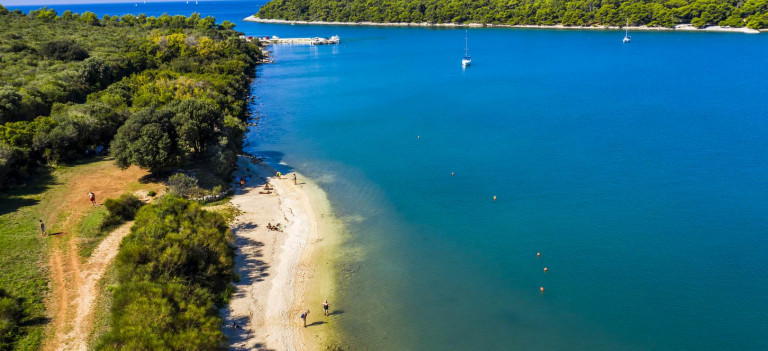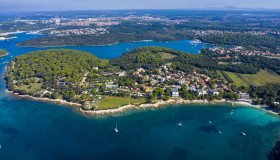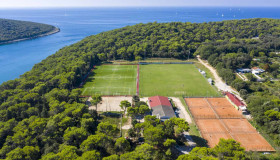
Banjole
Banjole is known for traditional activities such as olive growing, viticulture, and fishing. The settlement is connected to the rest of Istria by modern roads. When you enter Banjole, you will feel the Mediterranean climate that surrounds you. The combination of nature and beautiful architecture is visible throughout the space.

HISTORY
The history of Banjole and its surroundings goes back to the Bronze Age. Ancient graves of prehistoric inhabitants were found on the Bumbište hill, as well as a bronze dagger that was the attribute of a military leader at the time, which all leads to speculations about the importance of this place in that period. In the Roman period, civilization progressed, agriculture developed and the most important people of that time immigrated. From that period, the remains of Roman villas were found in the bay of Paltana and the Roman baths, after which Banjole got its name. Namely, the Latin name of the place was Balneolum minus, which in translation means small baths. The remains of a Roman settlement were found in the Centinela valley, while the remains of ancient Roman quarries and fragments of capital, a sarcophagus, and an unfinished statue were found in Rupice. In the Middle Ages, it was recorded that the former Kontrada Banjole then belonged to the Pomeranian area. After that, Emperor Corrado II presented it to the bishops of Pula. Later, Banjole belonged to the Jonatasi family, and then to the Castropola family. In the 15th century, along with other troubles such as wars and robberies, the population was also attacked by the plague. Most of them died, and the Banjol area became barren and neglected. Therefore, the government, taking into account the "bishop's rights", confiscated the land and in 1585 gave it to new noble families settled in the Pomeranian area. The Istrian ruler Renier distributed Banjol's arable land and pastures to families from Premantura. under the rule of Italy, as well as in the rest of Istria, times were difficult until the liberation of these regions, when Banjole became part of the former Yugoslavia and then Croatia in 1991.
RECOMMENDATIONS
Paltana - remains of Roman baths from the 1st century
Rupice - former Roman quarries
Centinera - remains of a Roman settlement
Fraškerić Island - an islet whose seabed is ideal for divers due to its beautiful reefs and passages
Volme, Kanalić bay - remains of the church of St. Nicholas from the 7th century
Pomer - a beautiful small town near Banjol with a modern nautical center
Cape Kamenjak - nature park, with a beautiful 30 km long coast








